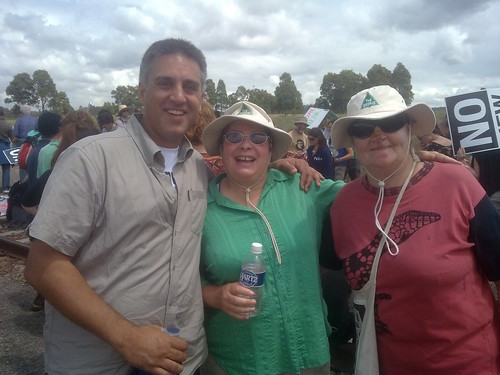by Steve Gray |
THE Queensland government has admitted police are photographing participants engaged in peaceful protests against companies searching for gas deposits.
Last week, protesters outside the Brisbane offices of QGC (Queensland Gas Company) confronted a man taking photographs who then identified himself as a police officer.
Protest organiser Drew Hutton accused the police of a return to the days of the Joh Bjelke-Petersen government, when civil liberties were seriously curtailed, demonstrators intimidated, and police regularly photographed protesters.
Civil libertarians agree, and will refer the police action to Queensland’s Crime and Misconduct Commission (CMC).
Police Minister Neil Roberts said the government was not involved in the incident.
“This is an operational matter for police with no involvement whatsoever from the government,” Mr Roberts told AAP.
He said the Queensland Police Service told him that police do not routinely photograph people who were involved in peaceful protests.
“However, if there are individuals who have been identified through intelligence who are considered to be a risk to the safety and security of the community, then photographs of these individuals may be taken,” Mr Roberts said.
He said the Parliamentary Crime and Misconduct Committee annually audited the intelligence holdings of both the police and the Crime and Misconduct Commission to ensure the propriety of the way they were collected and recorded.
“This indicates that Queensland has come a long way since the dark days of the Bjelke-Petersen era,” Mr Roberts said.
Queensland Council for Civil Liberties vice-president Terry O’Gorman said the minister’s response was inadequate.
He said Mr Roberts was hiding behind the excuse that it was an operational matter for police.
“There is no justification for photographing participants at demonstrations unless they are being photographed in the course of an arrest, to get evidence of an arrest, or unless they’re photographed for the purpose of collecting evidence of the commission of an offence,” Mr O’Gorman told AAP.
“This photography is clearly being carried out for intelligence gathering reasons.
“Intelligence gathering is clearly a throwback to the Bjelke-Petersen era and chills legitimate public protest.
“If Queenslanders know they are likely to be photographed at a peaceful demonstration, then they will be discouraged from demonstrating, which is a basic and important political right.”
The matter would be referred to the CMC, he said.
“This practice has got to stop and we’ll indicate to the CMC it should issue directives to the police commissioner that the videoing and photographing of people present at demonstrations is a totally unacceptable procedure,” Mr O’Gorman said.


 Resources investment expansion could mean danger down the road
Resources investment expansion could mean danger down the road
